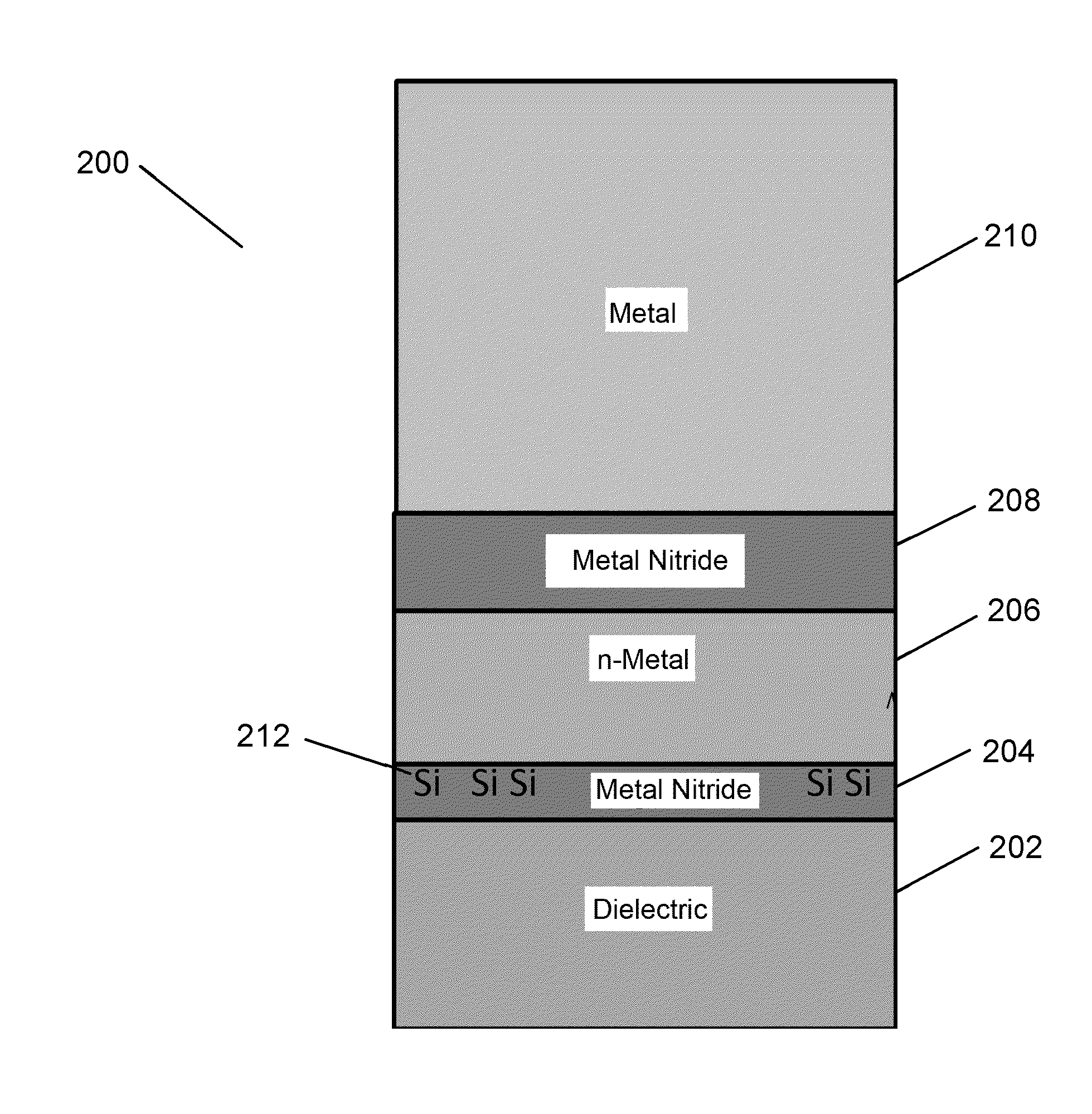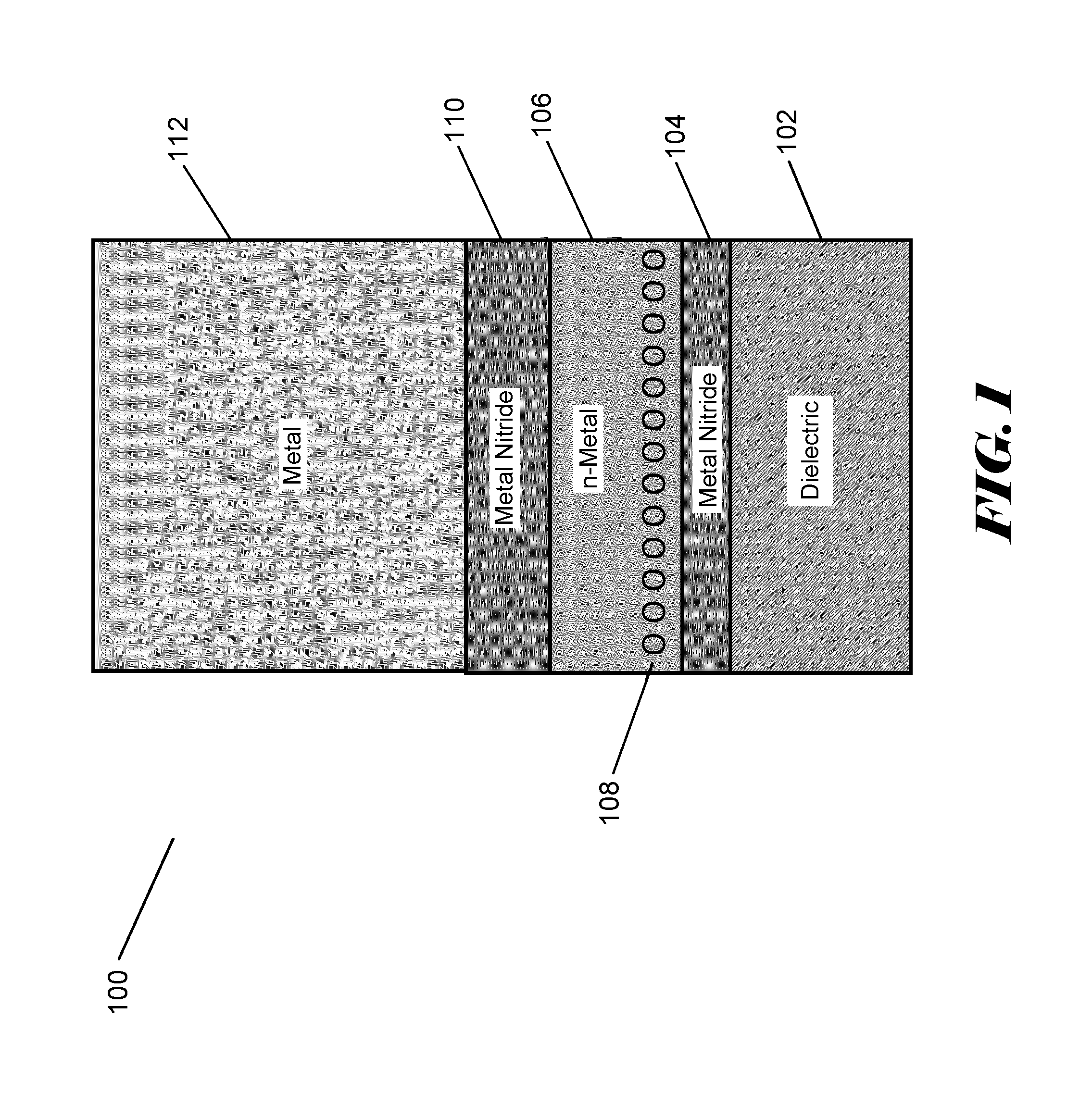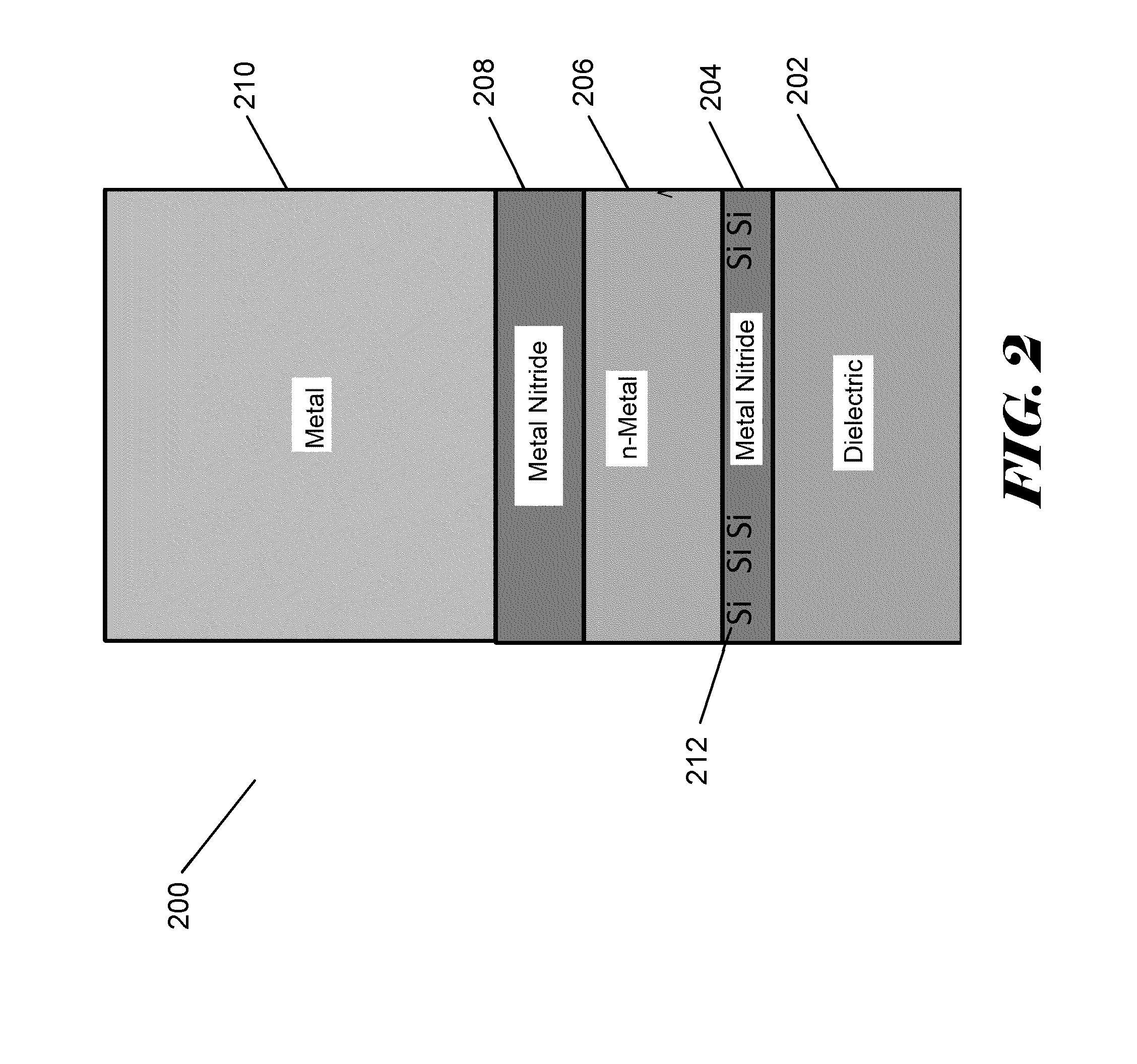Silane or borane treatment of metal thin films
borane technology, applied in the direction of coatings, chemical vapor deposition coatings, semiconductor devices, etc., can solve the problems of affecting the workfunction of a given thin film or an entire stack, oxidation of a metal thin film can easily occur,
- Summary
- Abstract
- Description
- Claims
- Application Information
AI Technical Summary
Benefits of technology
Problems solved by technology
Method used
Image
Examples
Embodiment Construction
[0021]The present disclosure provides methods for reducing or preventing undesirable effects of oxidation in one or more thin films comprising metal. The thin films can be deposited using known vapor deposition processes, such as atomic layer deposition (ALD) or chemical vapor deposition (CVD) processes. In some embodiments the methods for reducing oxidation can comprise an oxygen barrier material or a preventative treatment applied to a deposited thin film. In some embodiments however, a protective treatment may be provided as a part of an ALD or CVD method used to form the thin film. A protective treatment may comprise exposing the film to be treated to a silane or a borane compound. The treatment may reduce or substantially prevent oxidation of the thin film and the possible buildup of oxygen at the interface of the thin film and an overlying layer.
[0022]Oxidation resistance is important in many contexts. For example, in a gate stack even a minor amount of oxygen in the stack cou...
PUM
| Property | Measurement | Unit |
|---|---|---|
| pressure | aaaaa | aaaaa |
| pressure | aaaaa | aaaaa |
| pressure | aaaaa | aaaaa |
Abstract
Description
Claims
Application Information
 Login to View More
Login to View More - R&D
- Intellectual Property
- Life Sciences
- Materials
- Tech Scout
- Unparalleled Data Quality
- Higher Quality Content
- 60% Fewer Hallucinations
Browse by: Latest US Patents, China's latest patents, Technical Efficacy Thesaurus, Application Domain, Technology Topic, Popular Technical Reports.
© 2025 PatSnap. All rights reserved.Legal|Privacy policy|Modern Slavery Act Transparency Statement|Sitemap|About US| Contact US: help@patsnap.com



